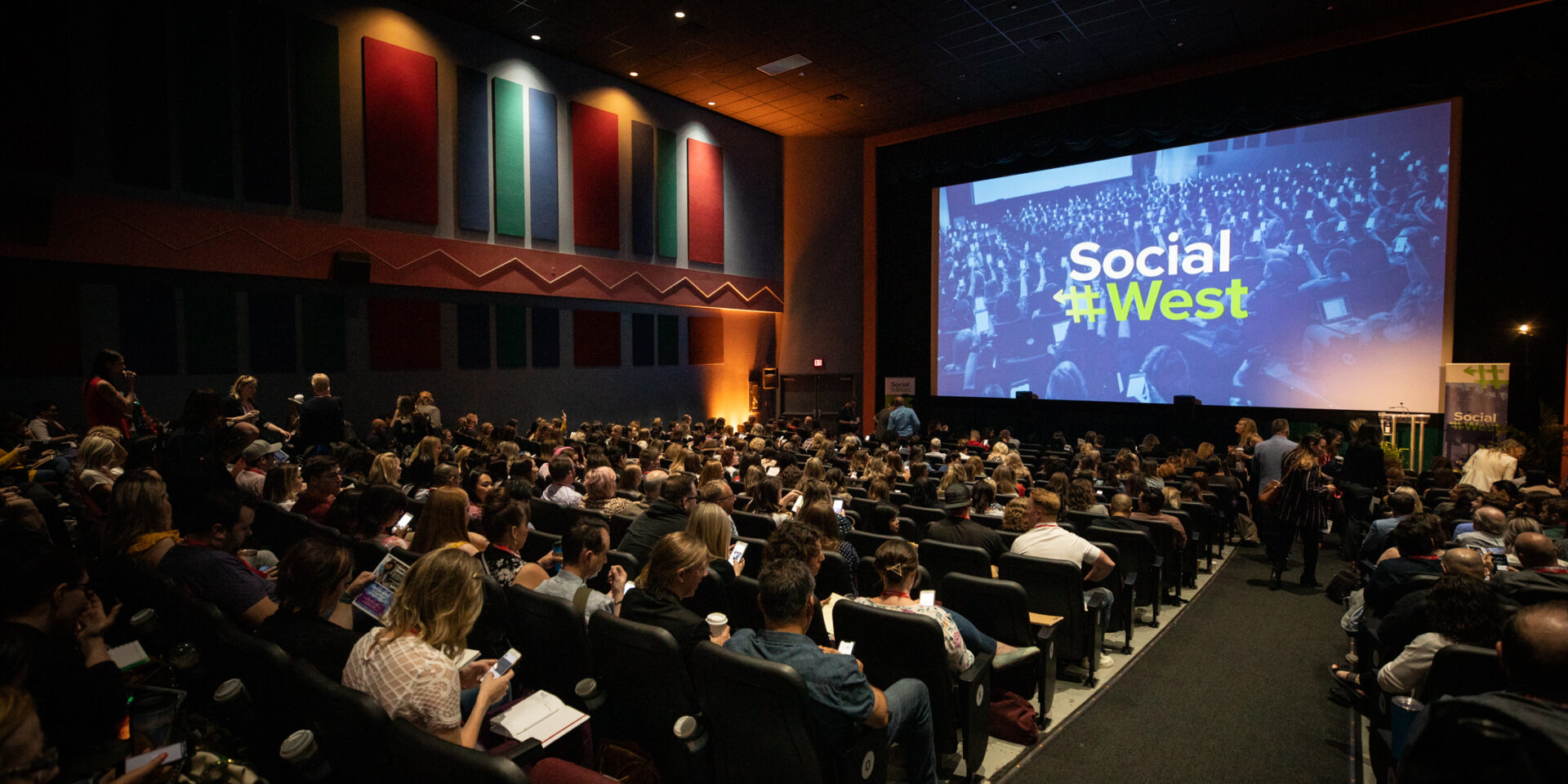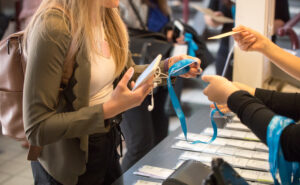In today’s fast-paced world, conferences have become vital platforms for networking, knowledge sharing, and professional growth. Hosting a successful conference can leave a lasting impact on attendees and participants, elevating your organization’s reputation and fostering industry connections. While the prospect of organizing a conference may seem daunting, with proper planning and execution, you can create an unforgettable event that leaves participants inspired and engaged.
What are the benefits of hosting a conference?
Conferences offer a multitude of benefits for both organizers and attendees. They facilitate information exchange, foster innovation and learning, and provide opportunities for networking and collaboration. A well-executed conference can boost your organization’s visibility, enhance its credibility, and even generate revenue through registration fees, sponsorships, and partnerships.
13 Steps to Plan a Successful Conference
Establish Your Goals & Objectives:
The foundation of any successful conference lies in setting clear and achievable goals. Determine the purpose of your event, whether it’s to educate, showcase new technologies, facilitate networking or position your organization as an industry leader. Don’t forget to always review the goals and objectives throughout the planning process.
Define Your Target Audience:
Identify your target audience based on demographics, interests, and professional backgrounds. Tailor your conference content to their preferences and needs including what time of year, month, and time of day is most appealing to your audience. If your conference has attendees traveling in from across the province, country or world, take this into consideration when selecting dates and season (avoid the busy holiday travel).
Define Your Budget:
Creating a realistic budget is crucial. Consider expenses such as venue rental, catering, AV, rentals, marketing, and speaker fees. Allocate funds wisely to ensure a seamless event. If the budget is not where you would like it, go through each budget line and highlight a “must have” and a “nice to have” and through that process determine if you can reallocate funds or reduce costs. If there are items you currently cannot afford, consider it for next year or including this in your future sponsorship package.
Assemble A Team/Vendors:
Build a competent team or engage reliable vendors to handle various aspects of the conference, such as logistics, marketing, and audio-visual setup. Vendors are crucial to a successful event. We follow the mindset of artist ,Anthony Burrill ‘s, graphic “Work Hard & Be Nice to People. And by nice, we mean be clear about the scope of work, collaborate with your event partners on the timeline and deliverables, be flexible to change, and have transparent and concise communication.
Choose a Theme and Format:
Select a theme that resonates with your audience and industry trends. Ensure that theme shows that your conference is the thought leader in your industry. Decide on the format, whether it’s a single-track, multi-track, virtual, or hybrid event. Again, take in account your target audience’s preferences when deciding on the format. If your audience is all across Canada, is there a way to make your conference more accessible. When it comes to theme, it is easy to get preoccupied with the colour of the table linens (which are impactful), but if you have a strong strategy and concept the décor decisions will be easily identified.
Pick a Venue:
The venue sets the tone for your conference. Choose a location that aligns with your theme, accommodates your expected attendance, and offers convenient amenities. In selecting a venue, we encourage the approach of “embrace the space”, bring the room design and architecture into your design. This allows you to spend your décor budget (if applicable) on enhancing the space instead of hiding it.
Handle Other Logistics:
Arrange transportation, lodging, and meals for attendees, ensuring their comfort and convenience throughout the event. As the concierge of your conference, it is important to be thoughtful about the guest experience. Take into consideration if the attendees have traveled and what are the amenities of the venue or area that can be offered. For example, you can arrange transportation from the airport to your venue via a chartered bus. Conference apps now also have options for attendees to connect with other attendees independently and arrange a ride share.
Invite Speakers or Special Guests:
Secure engaging and knowledgeable speakers who can contribute valuable insights to your conference. Consider thought leaders, industry experts, and influential figures. Budget allocation will play a major part in this selection. Ensure your offer to speakers includes all the details about the location and accommodations and a profile of your target audience. Reach out to your community, including sponsors, to see if there are speakers that should be invited.
Create the Schedule:
Craft a detailed schedule that balances keynote presentations, breakout sessions, networking opportunities, and breaks. Keep participants engaged and ensure a diverse range of topics. One of the best ways to keep a captive audience is to not have long presentations and create opportunities for audience participation. Your breaks are an opportunity to be fun and creative, and host something that is well suited to your audience. For example, a gelato break, serve a cold craft beer, or have mobile mini spa treatments. If the audience requires time to work during the breaks ensure they can quickly grab a snack and sit down to reply to emails in a lounge that has comfortably seating, WIFI and power stations.
Connect With Sponsors:
Sponsorships can provide financial support and enhance the conference experience. Identify potential sponsors and offer attractive packages that align with their objectives. Strategically review your event plan and identity all options for sponsor benefits and create a process including planning and budgeting for the fulfillment of all benefits. Once this conference planning guide is complete, create a sponsorship package that clearly communicates the value, benefits and requirements of the sponsor (Ex. Providing branding material). Engage a sponsorship procurement specialist, planning committee &/or ambassadors of your organization to share this package with their contacts. As part of your guide include a tracking document for sponsorship sales, negotiation and contract completion.
Recruit Event Staff and Volunteers:
Recruit a capable team of event staff and volunteers to assist with registration, logistics, and attendee guidance. If your organization has an affiliation to an educational institute, we would recommend reaching out to the student community for volunteers. Students could attend the conference for free if they volunteered for pre-determined amount of time.
Craft Marketing Materials and Strategies:
Develop compelling marketing materials, including a conference website, social media campaigns, and email outreach. Promote the event to generate buzz and attract a wider audience. In the first year of a conference there is a significant investment in marketing assets included a logo & design, branding guidelines, and onsite signage. When designing these materials please take in consideration longevity – can I use these materials again? Creating assets that have staying power is budget effective and environmentally friendly.
Test The Equipment and Finalize Your Agenda:
Thoroughly test audio-visual equipment, technology platforms, and other event essentials. Refine the agenda to ensure seamless transitions between sessions. With your technical partner plan rehearsals with all speakers and have all speaker presentations a week prior to the conference.
Post Conference:
Gather Attendee Feedback: Collect feedback from participants to assess the conference’s success and identify areas for improvement. Use surveys and evaluations to gain valuable insights. A conference app is a seamless way to gather this type of information. Over the years, conference app have become a cost effective way to sell tickets (e-commerce), share the most current program/schedule, allow attendees to directly connect with you each other and speakers, and creating a direct line of communication to the conference organizer for questions and feedback.
Communicate With Stakeholders: Thank sponsors, speakers, attendees, and partners for their contributions and involvement. Maintain open lines of communication to nurture relationships. Ensure all stakeholders have their final planning documents ideally a week before the conference and ensure that you are reachable when on site, and post conference set up debrief meetings with applicable stakeholders.
Compile Learnings for the Next Event: Document the successes, challenges, and lessons learned from the conference. Use this information to enhance future events and streamline the planning process. This is not a pointing fingers exercise, it should be a safe, open and transparent conversation of areas where there can be improvement. The feedback from all perspectives including the planner(s), vendors, attendees and speakers will elevate future events.
FAQs:
Is it hard to plan a conference?
Planning a conference can be challenging, but with careful preparation, a dedicated team, and a clear plan, it can be a rewarding endeavor that leads to a memorable and impactful event. We see all events as an asset, one that will have a high ROI if planned and executed well.
What makes a successful conference?
A successful conference balances engaging content, seamless logistics, and meaningful networking opportunities. It should leave attendees inspired, informed, and eager for future events. Attendee should be able to see and experience the value of the conference. Make sure you are collecting data through registration, conference app statistics and surveys from both attendees and speakers/participants.
What is the first step to planning a conference?
The first step to planning a conference is to establish clear goals and objectives. Define the purpose of the event, the target audience, and the outcomes you hope to achieve. This forms the foundation for all subsequent planning decisions. Do not begin with the design, start with the why, what, where, when, and how, and all the fun creative planning will follow suit.
In conclusion, hosting a conference requires meticulous planning and execution, but the rewards can be immense. By following these 13 steps and staying dedicated to your goals, you can create a memorable conference that resonates with attendees and sets the stage for future successful events. Please reach out to us if you are looking for assistance in planning your conference.





